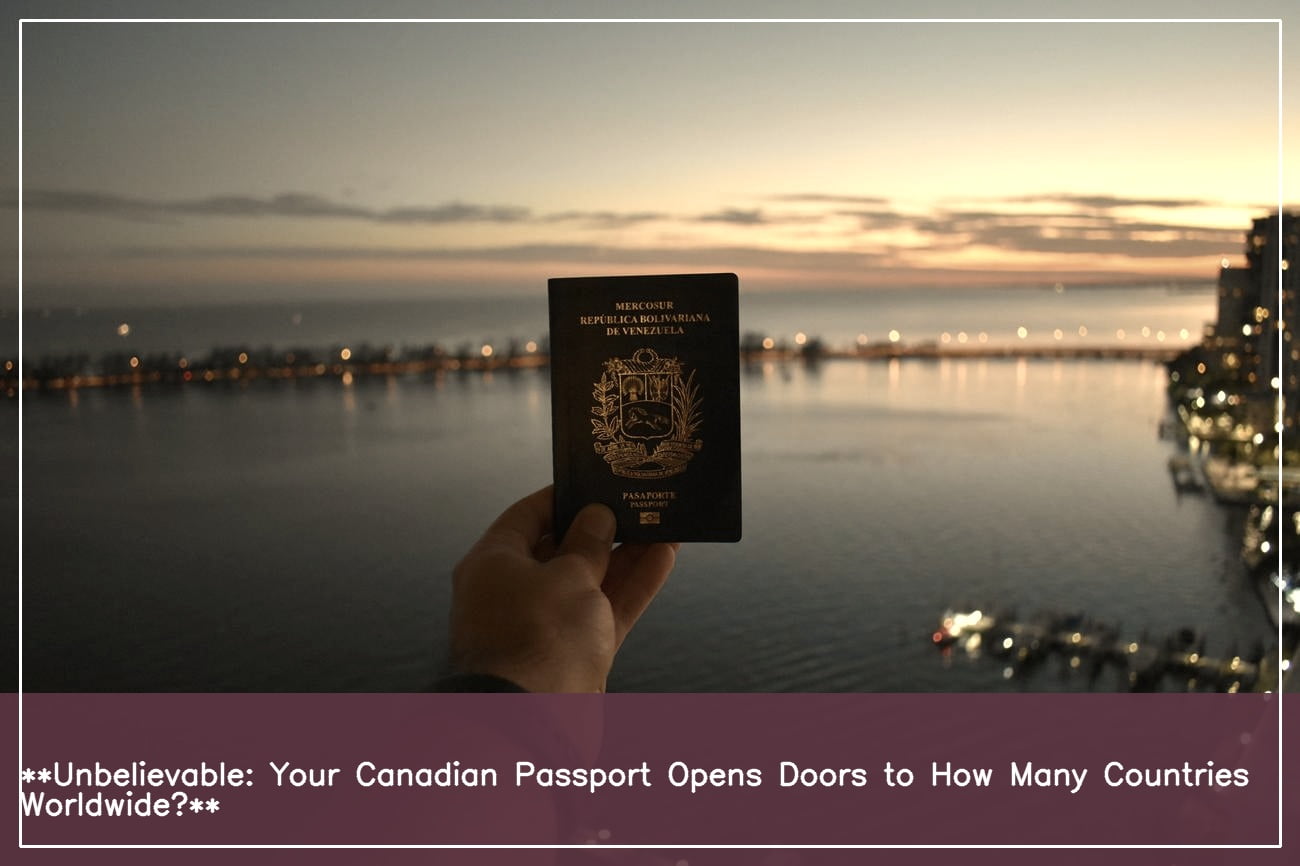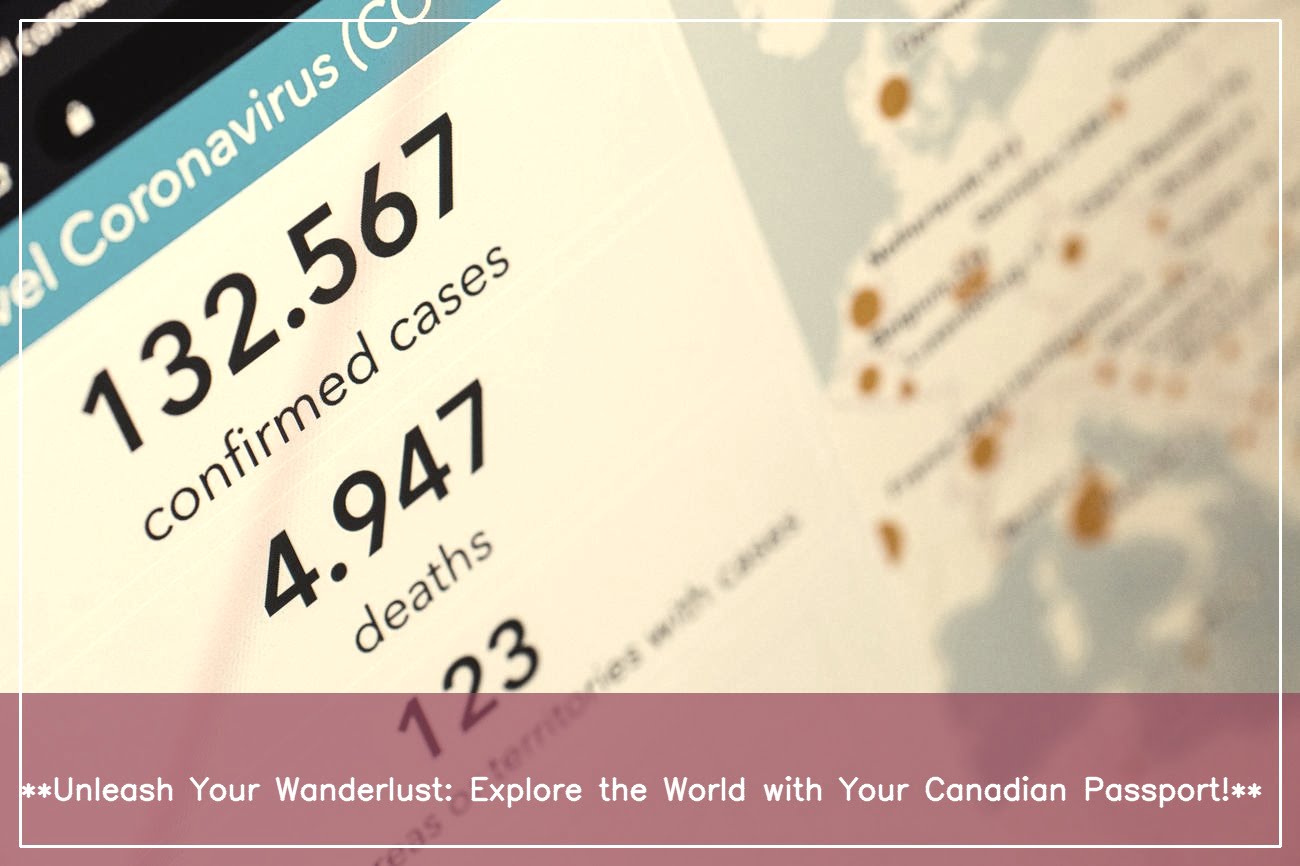Embark on an extraordinary journey as we delve into the world of passport travel, unveiling the captivating possibilities that await holders of a Canadian passport. Discover the remarkable number of countries you can visit with this powerful document, granting you access to diverse cultures, breathtaking landscapes, and unforgettable experiences. Join us as we unravel the secrets of visa-free travel, empowering you to plan your next adventure with ease and confidence. Welcome to the ultimate guide to exploring the world with a Canadian passport!

Key Takeaways:
- Canadian passport holders can travel visa-free to 148 countries and territories worldwide as of December 2023.
- Popular destinations such as the United Kingdom, Japan, the United Arab Emirates, the United States, and the entire European Union are included in these visa-free countries.
- The high mobility score of the Canadian passport reflects its ease of travel, making it one of the most desirable passports globally.
How Many Countries Can We Go with a Canadian Passport?
Planning your next adventure? Wondering how far a Canadian passport can take you? Look no further! With a Canadian passport, the world is your oyster. As of December 2023, Canadian passport holders enjoy the freedom of visa-free travel to an impressive 148 countries and territories worldwide!
Picture yourself exploring the vibrant streets of London, marveling at the iconic Eiffel Tower in Paris, or soaking up the sun on the pristine beaches of the Maldives, all without the hassle of签证.
So, what makes the Canadian passport so coveted? It all boils down to the country’s strong diplomatic relations and commitment to global mobility. Canada’s longstanding history of fostering international ties and upholding human rights has earned it a reputation as a trustworthy and reliable partner in the global community.
This reputation translates into a powerful passport that opens doors to a wealth of travel opportunities. Whether you’re a globetrotter, a business traveler, or simply someone who loves to explore new cultures, a Canadian passport grants you the freedom to embark on countless adventures without the added stress of visa applications.
Think about it, with 148 destinations at your fingertips, you could spend years exploring different countries, immersing yourself in diverse cultures, and creating unforgettable memories.
So, embrace your Canadian passport, pack your bags, and get ready to embark on a journey of a lifetime!
Key Destinations Accessible with a Canadian Passport:
- Explore the rich history and culture of the United Kingdom, including iconic landmarks like Buckingham Palace and the Tower of London.
- Experience the vibrant energy of Japan, from the bustling streets of Tokyo to the serene beauty of its ancient temples.
- Discover the modern marvels and cultural heritage of the United Arab Emirates, including the iconic Burj Khalifa and the traditional souks.
- Immerse yourself in the American dream, from the iconic Statue of Liberty to the breathtaking landscapes of the Grand Canyon.
- Explore the diverse cultures and stunning landscapes of the European Union, from the Eiffel Tower to the canals of Venice.
With so many incredible destinations within reach, the only limit is your imagination. So, start planning your next adventure and let your Canadian passport guide you to new horizons!
- Are you planning a trip abroad? Learn how many countries does UK passport allow and which countries you can enter freely with a valid British passport.
Strong diplomatic relations and historical ties contribute to visa-free agreements.
Throughout the tapestry of international relations, strong diplomatic ties and historical connections play a pivotal role in shaping visa-free agreements, paving the way for seamless travel and fostering cross-cultural understanding. These agreements, often forged through years of collaboration, mutual respect, and shared values, serve as testaments to the power of diplomacy in breaking down barriers and promoting global mobility.
The Interwoven threads of diplomacy and visa-free travel:
• Regional and subregional organizations: These organizations, such as the African Union, the European Union, and the Association of Southeast Asian Nations (ASEAN), play a crucial role in facilitating visa-free travel among member states. By fostering regional cooperation and integration, these organizations create a conducive environment for visa-free agreements that promote trade, tourism, and people-to-people exchanges.
• Bilateral agreements: Bilateral agreements between countries form the bedrock of many visa-free arrangements. Through negotiations and mutual understanding, countries can establish visa-free travel for their citizens, strengthening diplomatic ties and boosting economic and cultural exchanges.
Case Study: Canada’s Strong Diplomatic Ties and Visa-Free Access:
Canada stands as a prime example of how strong diplomatic relations and historical ties can lead to extensive visa-free travel opportunities. As of 2023, Canadian passport holders enjoy visa-free access to an impressive 148 countries and territories worldwide. This remarkable achievement can be attributed to Canada’s unwavering commitment to global cooperation, its strong diplomatic ties with many nations, and its historical role as a peacekeeper and mediator on the world stage.
Key Takeaways:
• Visa-free agreements are often the result of strong diplomatic relations and historical ties between countries.
• Regional and subregional organizations play a vital role in facilitating visa-free travel among member states.
• Bilateral agreements are another common mechanism for establishing visa-free arrangements between countries.
• Canada’s strong diplomatic ties and historical role have contributed to its citizens enjoying visa-free access to 148 countries and territories worldwide.
eTA requirement for visa-exempt travelers from certain countries.
Visa-exempt travelers from certain countries who wish to visit Canada for tourism, business, or transit may need to obtain an Electronic Travel Authorization (eTA). With an eTA, one can stay in Canada for up to six months. Travelers who don’t need an eTA can simply use their valid visitor visa.
Here are the key requirements for an eTA:
- A valid passport from an eligible country
- A valid email address
- A credit card or debit card to pay the eTA fee ($7)
To apply for an eTA, travelers can follow these steps:
- Visit the Government of Canada website.
- Click on the “Apply for an eTA” button.
- Follow the instructions on the application form.
- Pay the eTA fee.
- Submit the application.
Once the application is submitted, travelers will receive an email with their eTA decision within a few minutes. If approved, the eTA will be linked to the traveler’s passport and will be valid for five years or until the passport expires, whichever comes first.
Who is exempt from the eTA requirement?
The following travelers are exempt from the eTA requirement:
- Canadian citizens
- U.S. citizens
- Permanent residents of Canada
- Holders of a valid Canadian visa
Important things to remember:
- Travelers who are not sure if they need an eTA can check the Government of Canada website.
- Travelers who are denied an eTA may still be able to apply for a visitor visa.
- Travelers who have been refused a visa or eTA may not be allowed to enter Canada.
Key Takeaways:
- eTA requirement: eTA is required for visa-exempt travelers from certain countries for short visits to Canada.
- Eligible countries: Citizens from eligible countries can apply for an eTA.
- Application process: The eTA application process is simple and can be completed online in a few minutes.
- Validity: An approved eTA is valid for five years or until the passport expires, whichever comes first.
- Who is exempt: Canadian citizens, U.S. citizens, permanent residents of Canada, and holders of a valid Canadian visa are exempt from the eTA requirement.
- Checking eligibility: Travelers who are unsure if they need an eTA can check the Government of Canada website.
- Denied eTA: Travelers who are denied an eTA may still be able to apply for a visitor visa.
- Refused visa or eTA: Travelers who have been refused a visa or eTA may not be allowed to enter Canada.
Electronic visa or visa-on-arrival available for destinations with visa restrictions.
Enjoying hassle-free travel amidst visa restrictions? Look no further! Several countries have embraced the convenience of e-visas and visa-on-arrival for American citizens, allowing them to embark on adventures without extensive paperwork.
Australia, India, Kenya, Mexico, Myanmar, Pakistan, Singapore, Sri Lanka, and Turkey are among the destinations that have opened their doors to simplified visa processes. These Electronic visa or visa-on-arrival options streamline the travel experience, eliminating the need for in-person applications and lengthy embassy visits.
Key Takeaways:
- e-Visas are readily available for American citizens in various countries, making travel more convenient.
- Popular destinations like Australia, India, and Singapore offer e-Visa options for a seamless travel experience.
- Applying for an e-Visa is a straightforward process, often involving online applications and minimal documentation.
- Visa-on-arrival options provide flexibility for travelers with last-minute plans or changes in itineraries.
- Always check visa requirements and eligibility criteria before embarking on your journey.
Embracing the Simplicity of E-Visas and Visa-on-Arrival
Gone are the days when visa applications meant endless paperwork, embassy visits, and anxious waiting periods. With e-Visas and visa-on-arrival facilities, travelers can breathe a sigh of relief, knowing that their travel plans are just a few clicks away.
Online Applications:
- Effortlessly apply for e-Visas through user-friendly online platforms.
- Upload required documents, such as passport scans and photos, from the comfort of your home.
- Receive e-Visa approvals directly to your email, often within a few days.
Visa-on-Arrival:
- Disembark your flight with confidence, knowing that you can obtain a visa upon arrival at your destination.
- Approach designated immigration counters and present your passport and supporting documents.
- Pay any applicable visa fees and receive your visa on the spot.
Important Considerations:
- Always check the visa requirements and eligibility criteria for your intended destination.
- Ensure you have a valid passport with sufficient validity beyond your travel dates.
- Keep electronic copies of your e-Visa or visa-on-arrival for easy access during your journey.
- Follow immigration procedures and regulations, and be prepared to provide additional information or documents if requested.
Sources:
E-Visa Guide for U.S. Citizens

FAQ
Q1: How many countries can Canadian passport holders visit without obtaining a visa?
A1: As of December 2023, Canadian passport holders enjoy visa-free access to 148 countries and territories around the world.
Q2: What are some popular destinations included in the list of visa-free countries for Canadian passport holders?
A2: Canadian passport holders can travel visa-free to popular destinations such as the United Kingdom, Japan, the United Arab Emirates, the United States, and all countries within the European Union.
Q3: What factors contribute to the ease of travel with a Canadian passport?
A3: The high mobility score of the Canadian passport reflects its ease of travel. This score is influenced by factors such as the number of countries offering visa-free access, the strength of diplomatic relations, and the overall perception of the passport’s credibility.
Q4: Can Canadian passport holders visit all countries without a visa?
A4: While Canadian passport holders have visa-free access to an impressive number of countries, there are still some destinations that require a visa for entry. It’s important to research visa requirements for specific countries before planning a trip.
Q5: What are the benefits of holding a Canadian passport for international travel?
A5: The Canadian passport is highly regarded worldwide, offering its holders numerous advantages. These include visa-free travel to many countries, expedited entry through immigration, and increased credibility when applying for visas to other countries.

